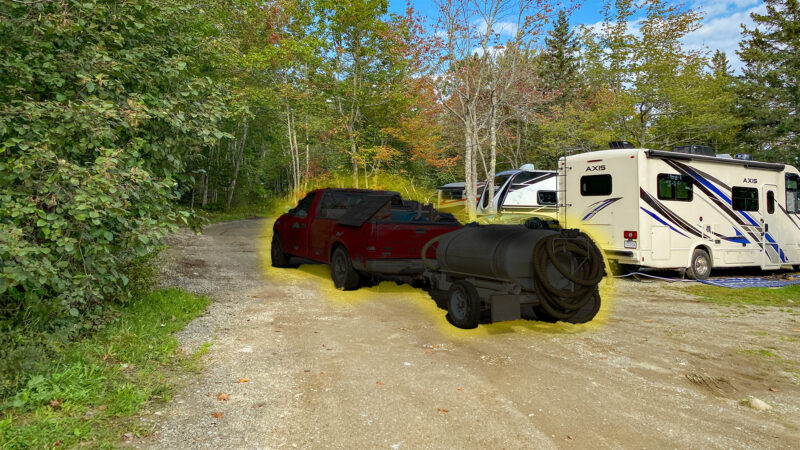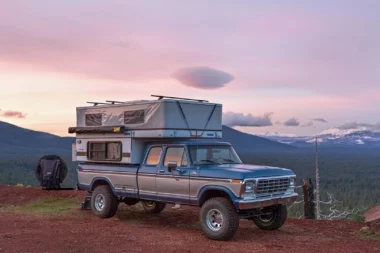Table of Contents Show
Sometimes when you arrive at a campground, the attendant will give you your site number and ask if you’ll need an RV honey wagon service during your stay. If you aren’t familiar with this RV lingo, you might embarrass yourself thinking she’s offering you local honey. So what is an RV honey wagon?
What Is an RV Honey Wagon?
Sometimes campgrounds don’t offer sewer hook-ups. So if you want to stay in one location for several days or weeks, you have to figure out how to dispose of your sewer waste and empty your black and gray tanks. Some campers use a portable waste tank and will transport it to a nearby dump station. Other campers prefer to use an RV honey wagon if available.
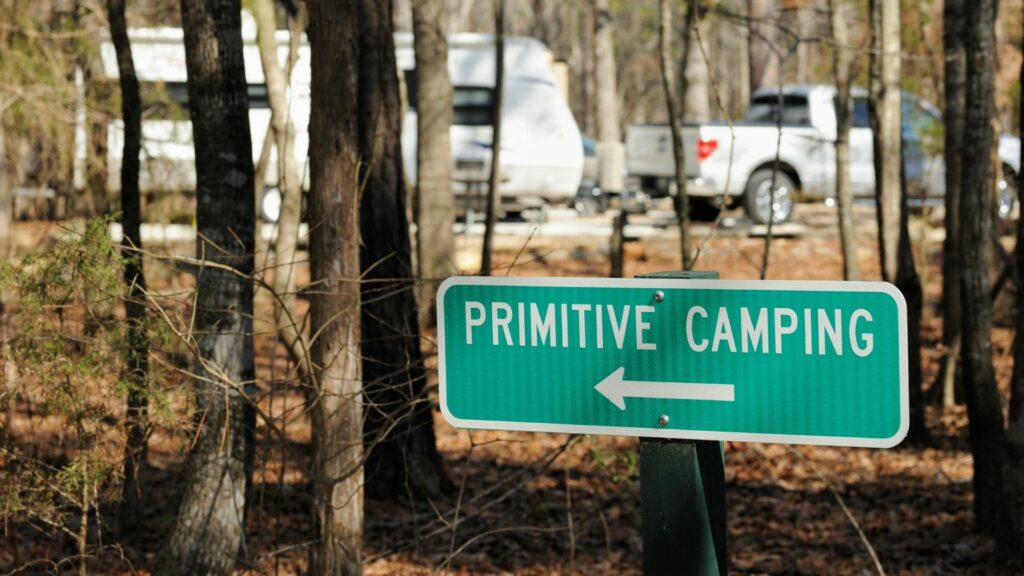
An RV honey wagon is a truck or trailer that will travel to campsites, release the waste from your black and gray tanks, and carry it off. You’ll also see them in marinas for the same reason. This allows campers to remain at their site without having to move their RV to a dump station.
It also saves you some work from emptying them into a portable waste tank. Sometimes the service has a fee, other times the campground covers it. Offering a honey wagon service is a great idea for campgrounds with limited sewer hook-ups. RVers will often stay longer if they have a convenient way to empty their tanks without doing the work themselves and finding a dump station.
How Does a Honey Wagon Service Work?
Campgrounds that offer an RV honey wagon service will typically only drive around to sites one or two days a week. You probably won’t see a truck driving around emptying tanks daily. If you want to take advantage of this service, you can sign up at the campground office and let them know your site number.
You don’t have to be present at your campsite when the honey wagon arrives. The worker will just need access to your tank valves, so make sure nothing blocks them. Upon arriving at your site, the worker will hook up a hose to your tank to drain the black and gray water.
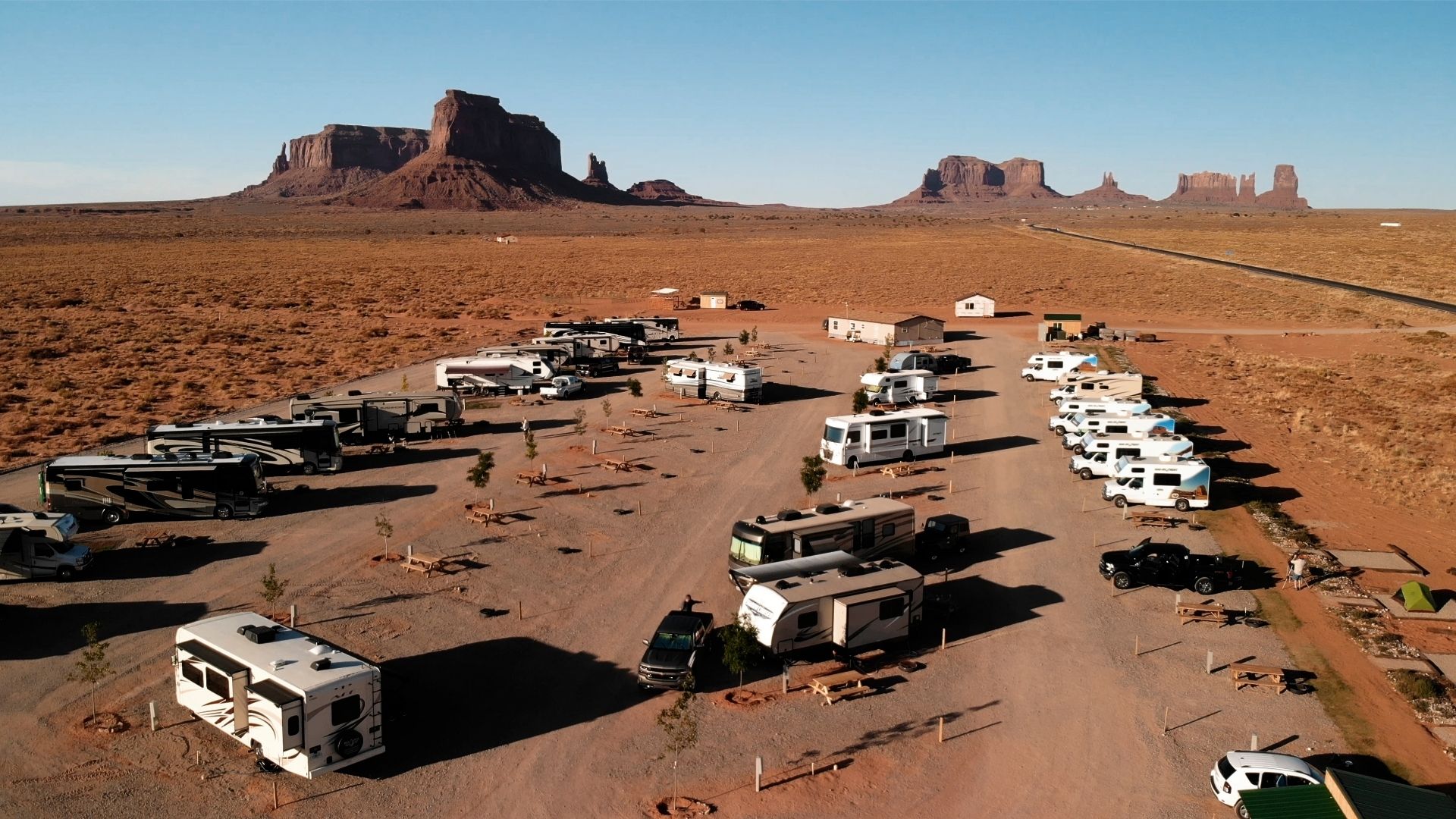
Remember, the black tank holds your sewer waste, and the gray tank has the water from your sinks and shower. The hose will run from your RV to the tank on the truck, where all of your waste will go. It’s a simple process that many RVers appreciate when staying in locations without full hook-ups.
How Much Does RV Honey Wagon Service Cost?
Some RV honey wagon services don’t cost anything. It’s an added amenity that might reflect a higher nightly rate at the campground. Other services range from $5 to $20.
Sometimes the off-site service only visits the campground on certain days of the week. Other times the campground host completes the duty. If you stay for a week and need an RV honey wagon service, just one or two visits will probably get you through.
Why Is It Called a Honey Wagon?
The name “honey wagon” comes from the old horse-drawn wagons that carried sewage waste. The honey-colored liquid that comes out of your black tank gives it its name. It is a slang term for a vacuum truck that collects waste.
Other Options for Dumping Your RV Waste Tanks with Partial Hookups
You have other options for dumping your RV waste tanks. First, you don’t always have to pay for a honey wagon service, especially if you can empty your tanks yourself. Also, you can purchase a portable waste tank that you take with you when you travel, or you can find the nearest dump station to drive your RV to.
Portable Waste Tanks
Camco, Barker, and Thetford are three common brands of portable waste tanks. They’ll range in price from $50 to $350 depending on the size and its features. The most expensive options have four wheels and carry about 36 gallons. The cheapest options have only two wheels and carry about 12 gallons.
Pro Tip: Find out which product edged out the competition when we compared the Camco and Barker portable waste tanks.
If you choose to use a portable waste tank, you’ll attach it to your RV, usually the ladder or a cargo rack on the back. When you need to use it, connect your hose to the valve on the camper and run it into the portable waste tank. Then haul the portable tank to a dump station. Remember, you only use this if you don’t have full hook-ups or an RV honey wagon service.
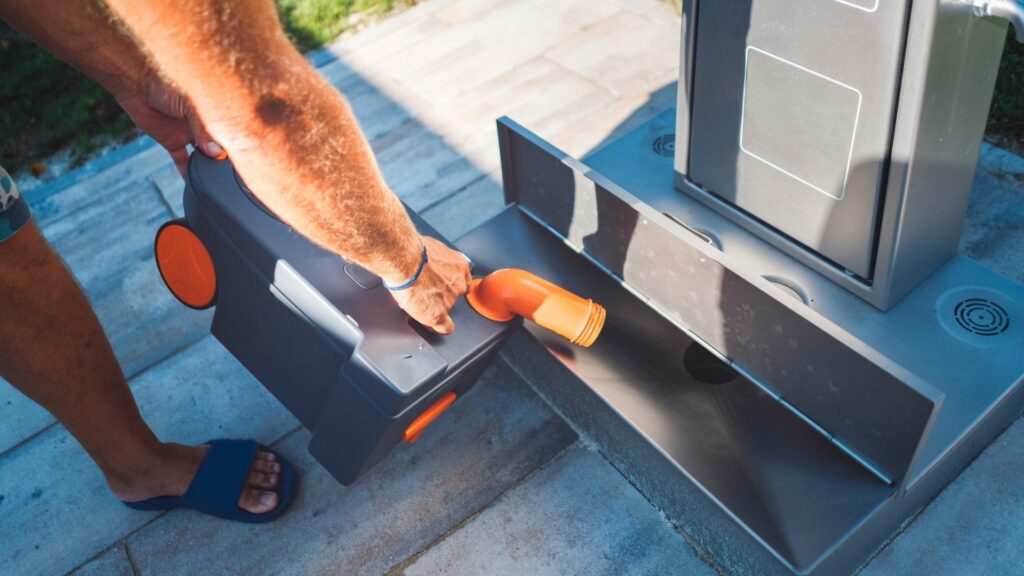
Find the Nearest Dump Station
Additionally, instead of emptying it into a portable tank, you can find a dump station. Those with a small pop-up camper, travel trailer, or Class B or C van may prefer this option. If you travel in a large fifth wheel or Class A motorhome, sometimes it causes more hassle than it’s worth. In this case, you may invest in a portable waste tank.
When you go to a dump station, you have to move your entire RV. If you have a travel trailer, that means hooking up to the tow vehicle and unhooking any power cords or water hoses. Then you have to travel to the dump station at the campground or down the road to the nearest one.
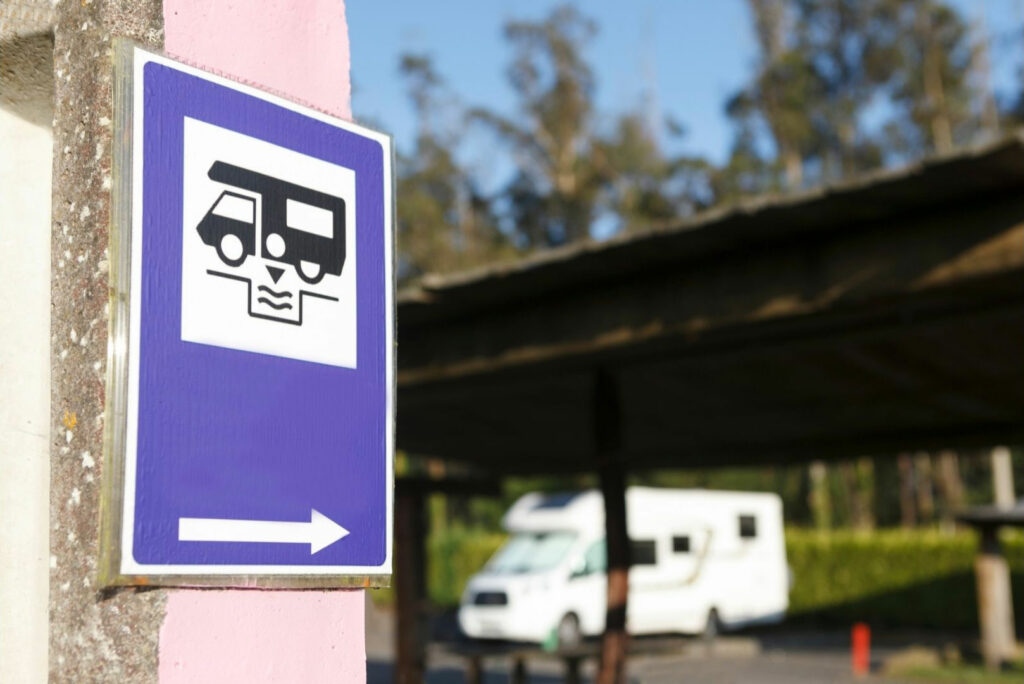
When you finish emptying your tanks, you’ll return to your campsite and set up again. If you only stay for two or three days, you can usually get by with visiting a dump station on your way out instead of having to return to your campsite. If you stay any longer than three days, you might have to go through the work of tearing down and setting back up.
Pro Tip: Save some money and check out our advice on how to find free dump stations.
How to Schedule RV Honey Wagon Service
Most of the time, you just visit the campground office to schedule an RV honey wagon service. They will let you know about any fees and write down your site number.
They’ll remind you to remove anything that might obstruct the worker’s ability to reach your tanks. If the campground doesn’t offer this service, you’ll need to look up the nearest RV honey wagon service to schedule a visit.
Is a Honey Wagon Service Worth It?
If you want convenience, then this service may be worth it. Or, you can do the work yourself and empty your tanks into a portable waste tank. Some RVers don’t want to go through the hassle of doing this. Honey wagon services don’t cost too much, leading some to pay the small fee.
You may find it worth it if you spend most of your time away from the campground enjoying hikes or local activities. It saves you time and energy. So does a honey wagon service sound like a great idea for your next campground visit?




